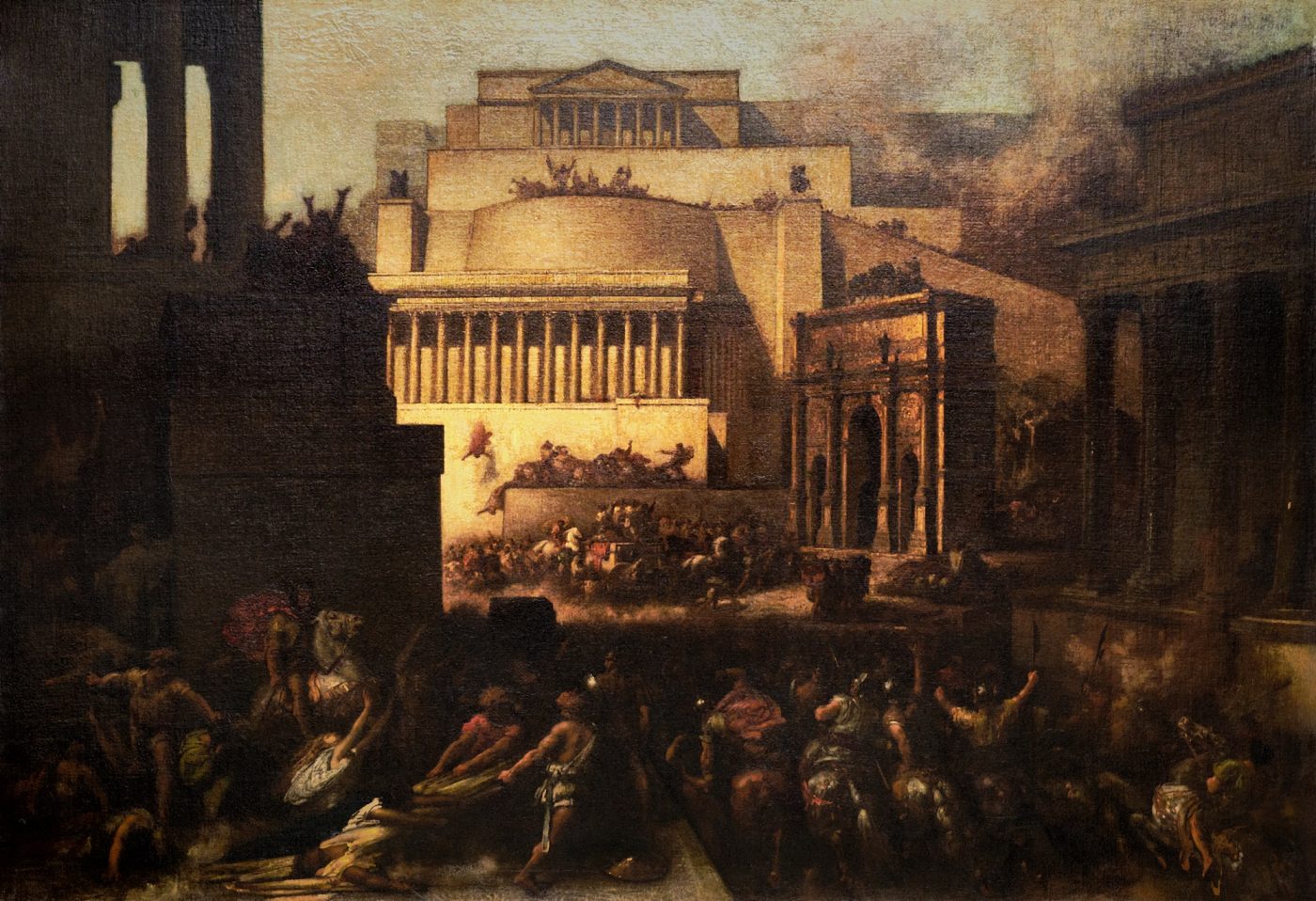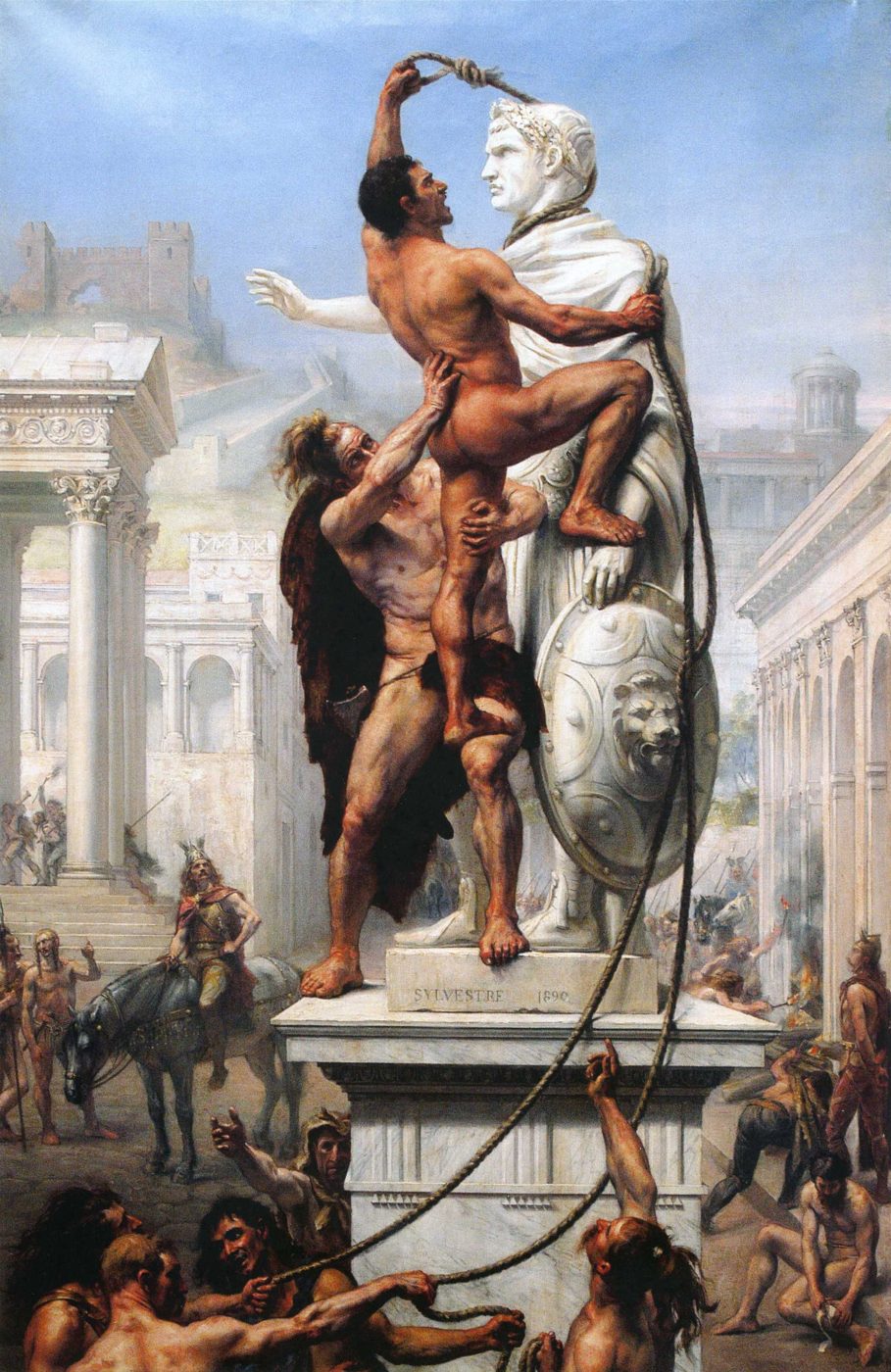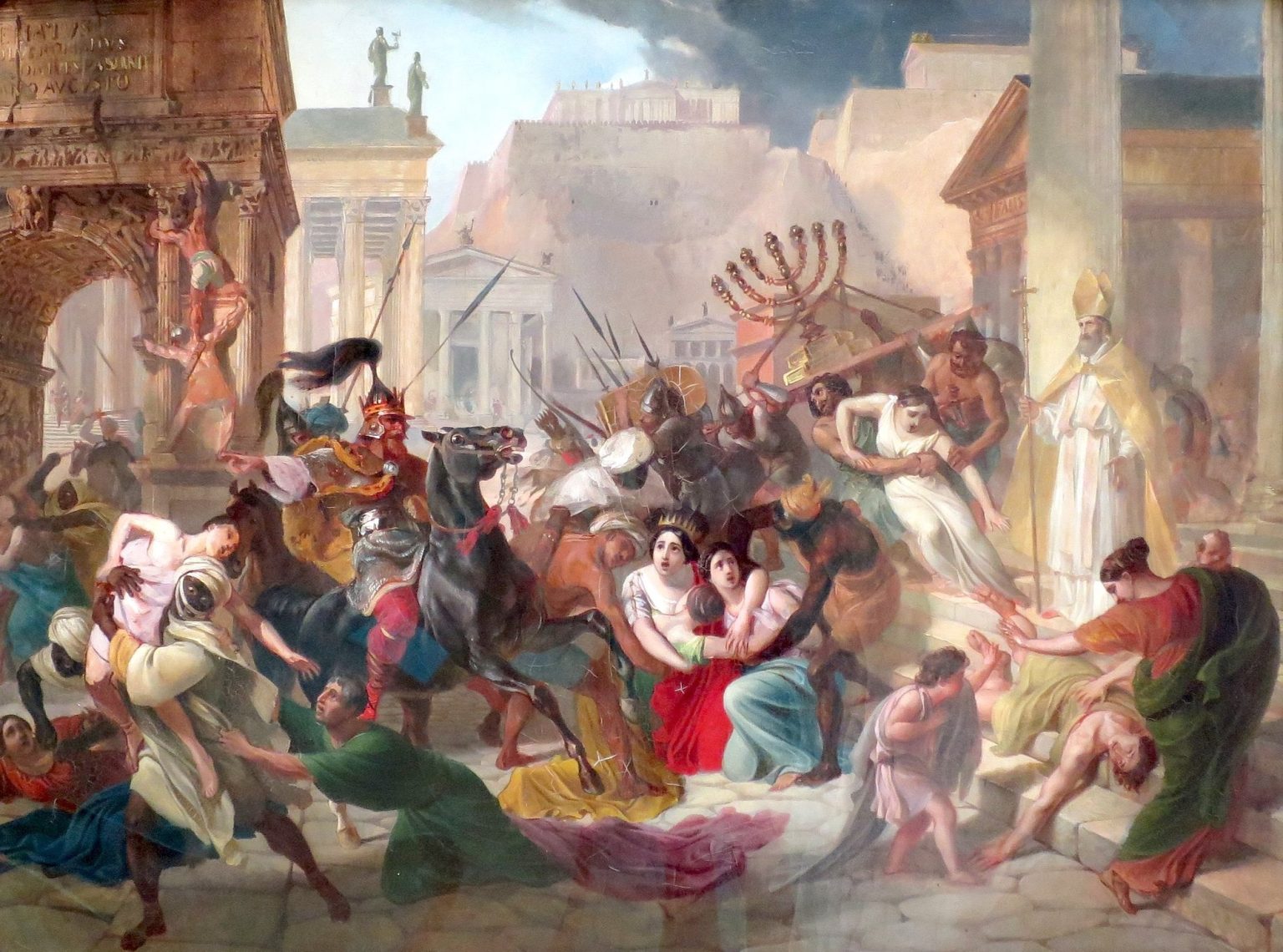Imagine a city so powerful that its fall would shock the world. That’s exactly what happened during the Gothic War and Sack of Rome. This article explores the Roman and Goths perspective on The Gothis War and The Sack of Rome, unraveling the reasons behind the war and its devastating aftermath. Read on to uncover the thoughts and feelings of the Goths and Romans during this pivotal time.
The Gothic War and Sack of Rome from Roman Perspective
In the annals of history, few events have been as transformative and poignant as the Gothic War and the subsequent Sack of Rome. From the Roman perspective, this was not just a military defeat or a political upheaval; it was a tragic event that signaled the decline of an empire that had stood as the beacon of civilization for centuries. This article delves deep into the Roman psyche of the time, unraveling the complexities of this monumental shift.
Gothic Challenge
For over a millennium, Rome had been the epicenter of culture, power, and innovation. Its legions had marched across continents, its senators had debated the ideals of governance, and its architects had built wonders that the world had never seen. But by the late 4th century AD, the empire was facing internal and external challenges. Among these external threats were the Goths, a group of Germanic tribes that had been displaced by the Hunnic invasions and were seeking refuge within the empire’s borders.
Clash
The Gothic War, which spanned from 376 to 382 AD, was not just a conflict between Rome and the Goths; it was a clash of cultures, ideologies, and aspirations. The Goths, initially allies and federates of the empire, felt marginalized and mistreated. Tensions escalated, leading to the Battle of Adrianople in 378 AD, where the Eastern Roman Emperor Valens was defeated and killed. This was a shocking blow to Roman prestige.
The Sack of Rome
Fast forward to the early 5th century, and the Goths, now under the leadership of King Alaric, were at the gates of Rome. The unthinkable happened in 410 AD: Rome, the eternal city, was sacked. For Romans, this was not just a loss of treasures and monuments; it was a symbolic blow, shattering the invincibility of the empire.

A World Turned Upside Down
Imagine being a Roman citizen during these tumultuous times. The city that had been a symbol of eternal power and grandeur was now in ruins. The streets that once echoed with the sounds of bustling markets and eloquent orators were now filled with the cries of despair. The Roman perspective was one of disbelief, grief, and introspection. Was this the end of the Roman way of life? What had gone wrong?
Many Romans believed that the sack was a divine punishment for abandoning traditional Roman deities in favor of Christianity. Others saw it as a consequence of moral decay and decadence. Philosophers and scholars debated the causes, but the consensus was clear: Rome was in decline.
Reflection
The sack of Rome was a watershed moment, but it was not the end of the Roman Empire. The empire would continue in the East as the Byzantine Empire for another thousand years. In the West, although political power fragmented, Roman culture, law, and legacy lived on, influencing the formation of medieval European states.
The Roman perspective on the Gothic War and the sack of Rome is a testament to the resilience of human spirit. Even in the face of overwhelming adversity, the Romans sought to understand, adapt, and rebuild. Their reflections on this tragic event offer valuable insights into the nature of empires, the ebb and flow of history, and the indomitable human will to persevere.

The Gothic War and Sack of Rome from Gothic Perspective
While the Roman narrative often paints this as a tragic decline, the Gothic perspective offers a different lens: one of retribution and a quest for rightful recognition within the empire. This article delves into the heart of the Gothic viewpoint, shedding light on their motivations, aspirations, and the challenges they faced.
The Goths and Their Quest for Identity
The Goths, a collection of Germanic tribes, had their own rich tapestry of traditions, beliefs, and aspirations. Displaced by the Hunnic invasions, they sought refuge within the Roman Empire’s borders. However, their journey was not one of mere migration; it was a quest for identity and a rightful place within the vast Roman realm.
The Gothic War
The Gothic War, spanning from 376 to 382 AD, was not merely a military confrontation. For the Goths, it was a fight for recognition, respect, and a place to call home. The Battle of Adrianople in 378 AD, where the Eastern Roman Emperor Valens met his end, was a testament to the Goths’ determination. It wasn’t just about victory; it was about sending a message: the Goths were a force to be reckoned with.
The Sack of Rome
By the dawn of the 5th century, under the leadership of King Alaric, the Goths stood at the gates of Rome. In 410 AD, they did what many thought impossible: they sacked the eternal city. But from the Gothic viewpoint, this wasn’t an act of mere destruction. It was retribution for years of marginalization and mistreatment. It was a call for the empire to recognize their worth and their place within its vast territories.

Challenges and Aspirations
Imagine being a Goth during these transformative times. The world around you is changing rapidly, and you’re at the heart of it. The Goths faced immense challenges: cultural assimilation, political maneuvering, and the constant struggle to maintain their identity. Yet, their aspirations were clear: to find a place within the empire where they could thrive, preserving their traditions while contributing to the larger Roman tapestry.
The Goths didn’t just want to be a footnote in Roman history; they wanted to be part of its fabric. They sought alliances, engaged in diplomacy, and when necessary, took up arms. Their perspective is a testament to the universal human desire for recognition, respect, and a sense of belonging.
Integration and Legacy
While the sack of Rome was a significant event, it wasn’t the end of the Gothic story. Many Goths integrated into the Roman society, serving in its armies, participating in its governance, and enriching its culture. Their legacy is a reminder that empires are not just built by the dominant culture but are a mosaic of diverse peoples, each contributing their unique threads.
What are your thoughts on the view of the Goths and Romans 🤔? Share it with us 💬 !
Echoes from a Bygone Era
The sun had set on the Roman Empire many times, but the dawn of the 5th century brought with it shadows that hinted at an impending dusk. The Gothic War and the subsequent Sack of Rome are not just chapters in a history book; they are tales of ambition, survival, and the inevitable change of eras. Let’s journey back to those tumultuous times.
From Refugees to Rebels
The Goths, a Germanic tribe, were initially refugees fleeing the terror of the Huns from the East. The vast Roman Empire, in its magnanimity, allowed them to cross the Danube and find sanctuary within its territories. However, promises of food and shelter were broken, and the Goths, hungry and marginalized, grew restless.
Adrianople: The Day the Earth Shook
378 AD marked a day that would be etched in the annals of history. The Goths, under the leadership of Fritigern, clashed with the Roman legions led by Emperor Valens near Adrianople. The outcome was unthinkable: the mighty Roman army was defeated, and Emperor Valens lost his life. This wasn’t just a battle; it was a statement.
Alaric: The Gothic King with a Vision
Enter Alaric, a Gothic leader with ambition and vision. He saw beyond skirmishes and sought a place for his people within the empire. But negotiations with the Romans were fickle. In his quest for a homeland for the Goths, Alaric marched to Rome. In 410 AD, a sight unimaginable unfolded: Rome, the beacon of civilization, was sacked.

The Sack: Not Destruction, but a Plea
Contrary to many tales, the Goths didn’t destroy Rome; they made their point and left after three days. The city’s sack was more of a symbolic act, a plea for recognition and a place within the empire, rather than mere destruction.
The Gothic War and Rome: Imagining an Alternate History
History is a tapestry woven with events, decisions, and outcomes. But what if one thread was pulled differently? The Gothic War and the subsequent Sack of Rome were pivotal moments in the decline of the Western Roman Empire. But what if there had been no war? Or if Rome had emerged victorious? Let’s embark on a journey through this alternate historical landscape.
The Goths and Rome in Harmony
Had there been no conflict between the Goths and Rome, the two might have integrated more seamlessly. The Goths, initially refugees from the Hunnic invasions, could have become allies, bolstering the Roman legions. This alliance might have fortified the empire against other barbarian invasions, potentially delaying or even preventing the fall of the Western Roman Empire.
A Different Outcome at Adrianople
Imagine the Battle of Adrianople in 378 AD with a different outcome: the Romans, under Emperor Valens, defeating Fritigern’s Gothic forces. With this victory, Rome’s dominance and prestige would remain unchallenged. The Goths, instead of adversaries, might have been assimilated as federates, providing military service in exchange for land and rights within the empire.
An Integrated Society
In this alternate timeline, the Goths and Romans could have coexisted and intermingled, leading to a rich cultural and societal fusion. Gothic traditions, art, and beliefs might have found their place alongside Roman customs, enriching the empire’s already diverse tapestry.
Historians’ Take on the “What If” of the Gothic War and Sack of Rome
The realm of alternate history is a tantalizing one, offering a playground for both historians and enthusiasts to speculate on the “what ifs” of the past. While the previous article painted a picture of a harmonious integration between the Goths and Rome had the Gothic War not occurred or had a different outcome, historians have various opinions on this scenario. Let’s delve into some opposing views and facts that challenge this alternate narrative.
1. The Inevitability of Conflict
Many historians argue that conflict between the migrating Goths and the Roman Empire was inevitable. Given the socio-political landscape of the time, with the Roman Empire already strained from internal and external pressures, the sudden influx of the Goths might have always led to tensions, regardless of the specific events at Adrianople.
2. The Complexity of Integration
While the idea of a seamless integration between the Goths and Romans is appealing, historical precedents suggest that such integrations were rarely smooth. The cultural, religious, and societal differences between the two could have led to tensions, even without the backdrop of war.
3. Rome’s Decline Was Multi-Faceted
Attributing the decline of the Western Roman Empire solely to the Gothic War oversimplifies history. Historians point out that the empire was grappling with economic difficulties, political instability, and other barbarian pressures. Even without the Gothic conflict, the empire’s decline might have been on the horizon.
4. The Goths’ Own Aspirations
It’s essential to consider the Goths’ own aspirations. Historians note that the Goths, like many migrating tribes of the time, were seeking better opportunities and a place to settle. Even without direct conflict, their ambitions might have put them at odds with Roman objectives.
More of → Perspectives ← or → WhatIf? ←
FAQ
1. How did the Gothic War influence subsequent barbarian interactions with the Roman Empire?
The Gothic War set a precedent for other barbarian tribes. Seeing the success of the Goths, other tribes were emboldened to challenge the Roman Empire, leading to a series of conflicts that further weakened Rome’s hold on its territories. The Gothic War essentially showcased that the once invincible Roman Empire had vulnerabilities that could be exploited.
2. What role did religion play in the Gothic War and the Sack of Rome?
Religion played a significant role. The Goths were largely Arian Christians, a sect considered heretical by the Roman establishment. This religious difference added another layer of tension between the Goths and the Romans. Additionally, after the Sack of Rome, many Romans believed the city’s fall was divine punishment for abandoning traditional Roman deities in favor of Christianity.
3. How did the Roman populace perceive the Goths post the Sack of Rome?
The Sack of Rome instilled a deep sense of fear and mistrust towards the Goths among the Roman populace. While the Goths didn’t destroy the city entirely, the psychological impact was profound. The Romans, for a long time, viewed the Goths as barbarians and destroyers, even though many Goths later integrated into Roman society.
4. Were there any notable collaborations or alliances between individual Goths and Romans during or after the war?
Yes, after the Gothic War, many Goths were integrated into the Roman military structure. They served as foederati, or allied troops. Over time, some Goths rose to prominent positions within the Roman military and political hierarchy, showcasing a level of collaboration and mutual dependence.
5. How did the Eastern Roman Empire (Byzantine Empire) react to the Gothic War and the Sack of Rome?
The Eastern Roman Empire, or Byzantine Empire, was deeply concerned about the Gothic War, especially after the defeat at Adrianople. The loss of an emperor (Valens) was a significant blow. However, after the Sack of Rome, the Byzantine Empire took steps to fortify its territories and strengthen its military capabilities, learning from the Western Empire’s experiences.
What are your thoughts on the view of the Goths and Romans 🤔? Share it with us 💬 !
This was a delight to read. You show an impressive grasp on this subject! I specialize about Appliances and you…
i think he was just a crazy guy, a victim of his childhood and enviroment
super interesting 🤔
Loved this article, learned a lot!




Leave a Reply